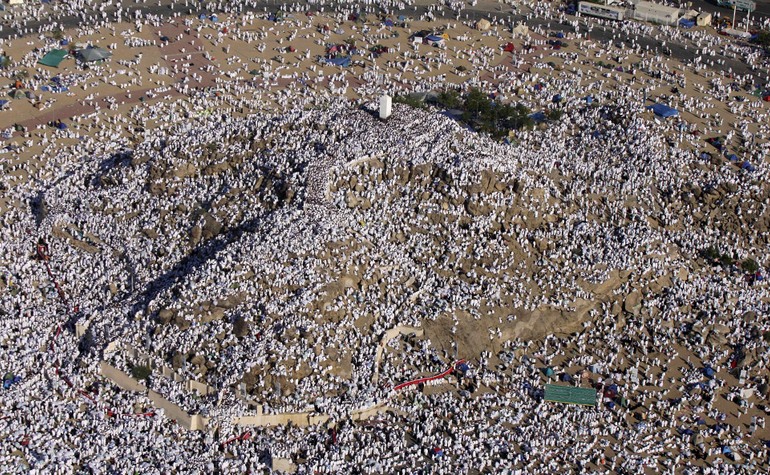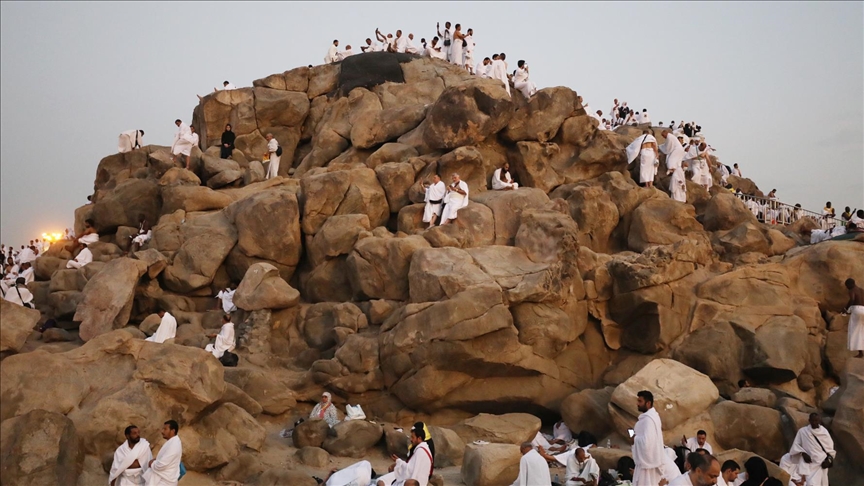Mount Arafat
Mecca, Saudi Arabia

Mount Arafat (Jabal Arafat) in Mecca, Saudi Arabia is one of the most important historical sites in the Islamic world. A key location during the Hajj pilgrimage, it’s where Prophet Muhammad delivered his final sermon. Known for its spiritual significance rather than architectural features, Mount Arafat tourism offers visitors a unique chance to connect with Islamic history. Things to see in Mecca often include this sacred site, where the Mount of Mercy marks a powerful symbol of unity and faith. Whether you are planning to visit during Hajj or outside the season, Mount Arafat provides an unforgettable spiritual experience.
Mount Arafat, also known as Jabal Arafat, is one of the most spiritually significant sites in Mecca, Saudi Arabia, and holds immense historical and religious importance in the Islamic world. Rising from the plains about 20 kilometers southeast of central Mecca, this granite hill is the focal point of the Hajj pilgrimage, attracting millions of Muslims from around the globe every year. For anyone looking to visit Mount Arafat, it’s not just a physical journey, but a deeply spiritual and emotional experience rooted in centuries of tradition. A Brief History of Mount Arafat Mount Arafat’s significance dates back to the Prophet Muhammad (PBUH), who delivered his famous Farewell Sermon from this very site during his final Hajj in the year 632 CE. This sermon emphasized core Islamic values such as equality, justice, and devotion to God. Since then, the mountain has become an essential destination during Hajj. The site itself was not “built” in the conventional sense, but rather gained significance through this powerful event. Today, it stands as one of the most revered historical sites in Saudi Arabia and a symbol of unity and submission in Islam. Top Features and Highlights The main highlight of Mount Arafat is the granite hill itself, which stands about 70 meters high. At its peak lies a small white pillar known as the “Mount of Mercy” (Jabal al-Rahmah)—a symbolic marker of the Prophet’s sermon location. Pilgrims often gather around this area, offering prayers and supplications, especially during the Day of Arafah, the ninth day of Dhu al-Hijjah. Surrounding the mountain is the Plain of Arafat, where millions of pilgrims congregate during Hajj to perform the critical ritual of Wuquf (standing at Arafat). The scale of the gathering is awe-inspiring, and the area is equipped with temporary tents, water facilities, and medical stations to support pilgrims. What Makes Mount Arafat Unique Unlike other religious or historical sites, Mount Arafat tourism is not about architecture or lavish design, but about spiritual significance. The site remains a symbol of humility, reflection, and connection to faith. One lesser-known fact is that some scholars believe Mount Arafat may be where Adam and Eve reunited on Earth after being cast out of paradise, making it not only central to Islam but significant in broader Abrahamic traditions as well. The serene, desert landscape surrounding the hill adds to its spiritual atmosphere, offering a contemplative space for pilgrims. Despite the massive crowds during Hajj, many describe the experience as peaceful and emotionally transformative. Current Use and Visitor Information Today, Mount Arafat plays a vital role in Islamic pilgrimage and is active only during specific Hajj rituals, although it can be visited outside of Hajj season as well. For Muslims, visiting the site outside Hajj doesn’t fulfill the pilgrimage obligation, but it still holds deep spiritual meaning. There is no entry fee to visit Mount Arafat, and the site is open year-round, although facilities and accessibility options vary outside the pilgrimage season. During Hajj, non-pilgrims are advised not to enter the area due to crowd control. For visitors, it’s important to observe respectful behavior—dress modestly, avoid loud conversations, and follow any guidelines provided by Saudi authorities. Transportation is usually arranged through official Hajj or Umrah tour groups, and private taxis or buses are available for visitors at other times. Comfortable footwear, sun protection, and water are recommended due to the hot, arid climate.
Location
Coordinates: 39.9833, 21.3556
View on Google Maps

